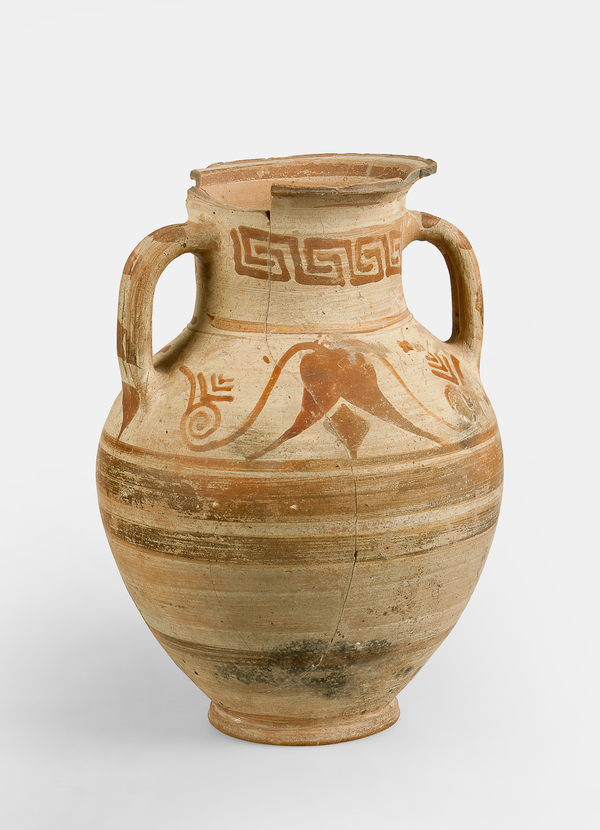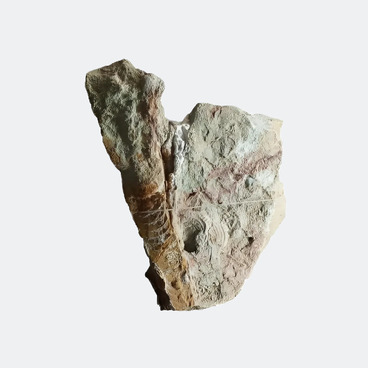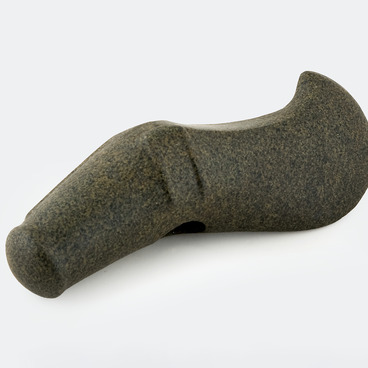Amphorae are ceramic containers that were designed to transport goods by sea. The elongated shape of the vessel made it possible to profitably fill the space in the hold of the ship. The amphorae were placed close to each other with their necks up, which explains the presence of stamps in the upper part of the body and on the handles. The life of the amphora was very long-lasting. After it ceased to be a vessel for transportation, it was used as a container for storing food in everyday life, as well as funeral equipment. Spinning wheels, sinkers and other things were made from fragments of the amphora.
In 1997, in the Oktyabrsky district near the rural locality of Aksai, the archaeological expedition of the Volgograd State University unearthed the Savromat burial. There was a skeleton of a teenager 12-13 years old, and also a magnificent antique amphora was discovered next to it. The amphora was decorated with two symmetrically arranged lotus flowers along the body and a meander ornament applied in red paint along the neck.
This discovery of a burial in the Volgograd region allows us to determine the date and obtain supplementary data on the cultural contacts of the nomadic population between the Volga and Don rivers.
The Greek amphora refers to samples of Rhodian-Ionian ceramics that spread in the Northern Black Sea region in VII — VI BC. Due to Hermonassa and Olivia Analogues of this amphora, we can date it to the middle — second half of the VI century BC. Most likely, this amphora came to the nomads in the Volga-Don plains through one of the Greek cities of the Northern Black Sea region.



